Discovering the Sea of Cortez
Hauling out our sailboat Do The Thing in Puerto Penasco on June 3rd 2024 was the conclusion of a wonderful trip across the Sea of Cortez that had started four months earlier. A trip that began in Mazatlán, on the mainland side of Mexico, that brought us all the way up North of the Sea along the Baja California coast, revealing us all the beautiful scenery this region has to offer. As if the cruise itself was not impressive enough, we have had the chance to buddy boat with our friends Rachel and Rob on SV Westin Wray, making the trip even richer in souvenirs and memorable moments. To all the people we have met, locals and sailors, I say thank you. Now let’s go back in time…
Marina El Cid – Mazatlán (one of our favorite marinas since we started our adventure on Do The Thing) is where we spent a couple of months before we crossed the Sea to reach the South part of Baja California. We met many good friends that we would run into several times on our way to Puerto Peñasco. Among them, Karen and Tim, on SV Crow’s Nest, whose kindness is matched only by their generosity. There, we also met for the first time Rachel and Rob, their itinerary was exactly the same as ours so we decided to make the trip together. A good decision indeed! On February 20th, we left the marina at high tide, around 06:30 and anchored near Isla Pájaros to wait for our friends. At 09:30 we were both heading North, the real voyage began.
From Mazatlán, we followed the coast until Bahia Santa Maria, which would be a good location to start the passage to Baja California since the distance would be shorter and the wind more favorable. It was around 07:00 on February 21st when we changed our cap to 250 and started the crossing of the Sea. The conditions were not optimal as far as sailing, but eventually the wind would pick up and allowed us to sail all the way to Bahia de Los Muertos, where we arrived in the morning of the following day after a rough night of navigation due to very strong gusts and high waves.


We spent 10 days in this gorgeous bay. This is where we saw for the first time the very unique landscape of Baja California, with the tall mountain ranges where only cacti and rocks can grow. The beach is very large and is a mix of white sand and rocks. At the North end of the bay, the local fishermen were launching their pangas from a very busy boat ramp. Also very popular in this section of the bay is the restaurant 1535 serving a good selection of seafood and traditional Mexican food. Our favorite restaurant however was the Centro de Trenes, located on the South side with a stunning decoration of an old train station, a very beautiful place in such a remote location.


On March 2nd, we left Bahía de Los Muertos and reached Bahia Balandra located 10 NM North of La Paz. This bay was just amazing, the color of the water can only be described with pictures, especially the ones taken with the drone. This bay has a mix of white sand beaches and cliffs with crystal clear water everywhere. We went to one isolated beach with our dinghy and were literally like in a magazine… The anchorage in the bay was as easy as in all the bays we have visited in Baja California, with a perfect sandy bottom and a range of 15-25 feet depth. We saw a maximum of 5 boats anchored, making this large bay overall very intimate. We stayed there 3 days and left on March 5th in the direction of La Paz to get supplies.


La Paz is one the the largest cities in this region of Baja California. To access La Paz by boat, you need to follow a very long channel starting from Punta Prieta and reach Marina La Paz after about 4 NM. Our intention was to stay for one week in one of the Marinas along the channel. We were able to find a slip at the Marina Costa Baja, the first one at the entrance of the channel. From there we were able to go to La Paz using DiDi, which was very convenient. We enjoyed walking along the Malecon, but we didn’t find La Paz as nice as Mazatlán… We took advantage of our week at the marina to restock our supplies, and get the laundry done.
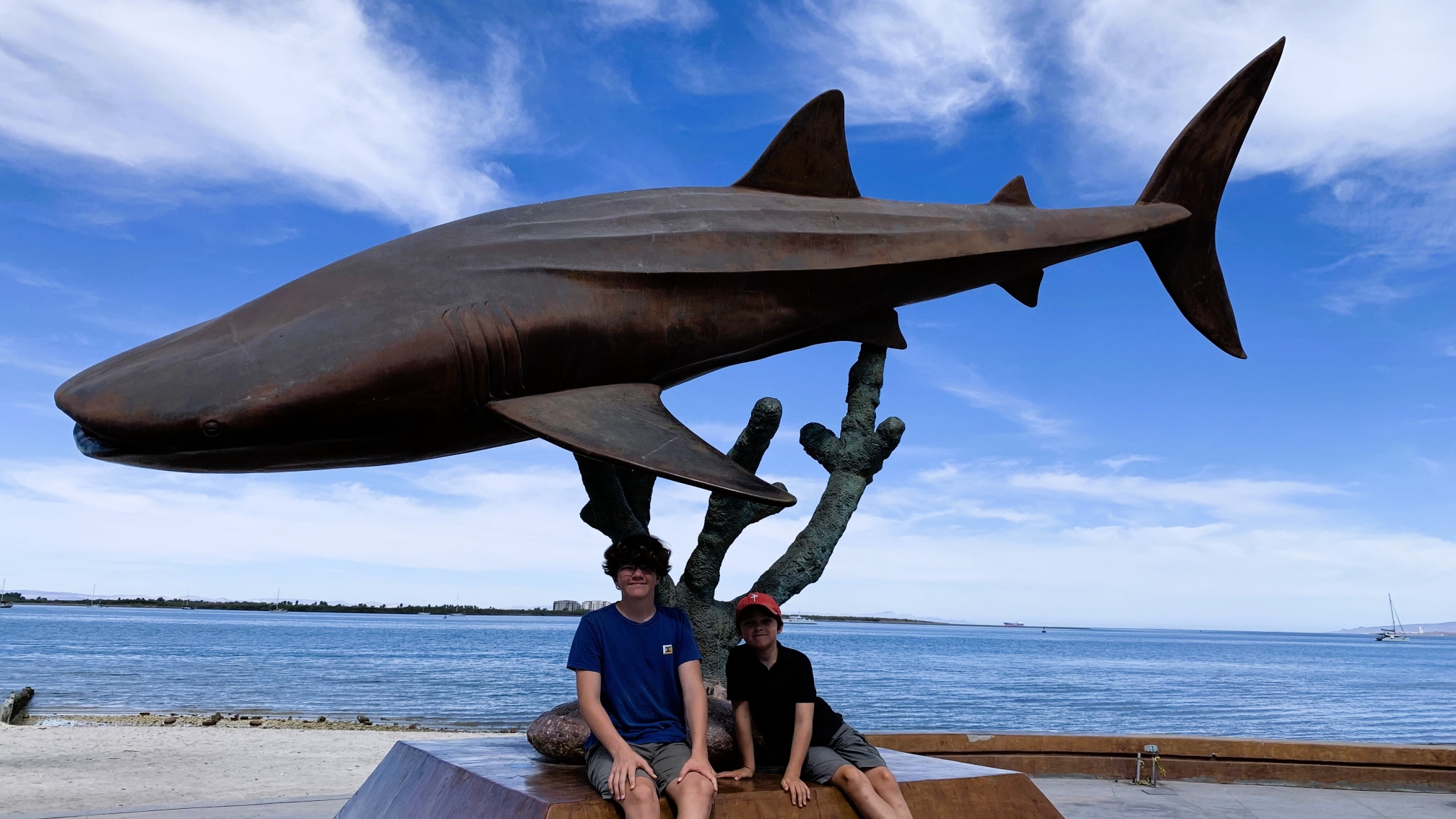

From there our plan was to visit Isla Espiritu Santu and Isla Partida, located 15 NM North of La Paz, then come back for supplies before we resume our trip along the coast. We left the Marina Costa Baja on March 12th and anchored in Bahia Falsa for two nights before we crossed to the islands. Bahia Falsa is a nice little bay located 3 NM North of the marina. This bay has the same entrance as Puerto Pichilingue, where the ferry that connects to Topolobampo on the mainland departs. A little restaurant installed on the beach was serving excellent seafood and drinks.


On March 14th, we left Bahia Falsa in the morning and reached Isla Espiritu Santo after 7 hours of sailing. We opted for Bahia Bonanza, located on the South-Est side of the island as it would offer us a better protection against the westerly winds at the anchor. The bay has a white sand beach almost 2 km long with gorgeous hills in the background, the mix of colors is just amazing. Once again, the anchoring conditions were just perfect. We spent two days in Bahia Bonanza then headed to Isla Partida on March 16th.


Isla Partida is an island connected to Isla Espiritu Santo on the North end. This island offers many bays with spectacular scenery. We anchored 3 nights in Bahia Ensenada El Cardonal located on the West side of Isla Partida. I will have to say this is one of my favorite bays in the Sea of Cortez, not only the color and the transparency of the water is incredible, but the surrounding landscape is breathtaking. We went ashore with the dinghy and landed near a lush mangrove, whose green color, mixed with the white of the sand and the blue of the water, was painting an epic scenery. From there we hiked to the other side of the island through a narrow valley full of cacti and reached a cliff of brown rock surrounded by the deep blue color of the Pacific.


Our next bay on the island was Caleta Partida, located not even 1 NM South of Ensenada El Cardonal. Its particularity is the little winding channel separating the two islands. We reached the shore with our canoes and walked along the beach past a fisherman’s camp and entered the channel. We rowed all the way to the other side of the island in search of underground caves that turned out to be too far away…


After two days in Bahia Caleta Partida, we left the island and headed back to La Paz to restock. This time we decided to anchor in front of the Marina La Paz at the end of the channel. This is definitely the part of the trip I enjoyed the least. Not only the very large number of boats anchored around was creating an hazardous proximity, but the very strong currents (reversing twice a day) were increasing the risk of collision with the other boats. The only advantage was the proximity of the dinghy dock at the marina where we could land and walk downtown La Paz from there to get our supplies. On March 23rd, after two nights in the channel, we resumed our voyage in the direction of Bahia Bonanza on Isla Espiritu Santo that we previously visited, to be protected from the westerly winds until we could continue North.


On March 25th, we left the island and reached Cabeza Mechuda, located around 30 NM North-West of Isla Espiritu Santo. The initial intent was to go straight to Isla San Fransisco but the forecast of very strong westerly winds for the coming night convinced us to seek protection on the coast. The bay was nice but seemed bland compared to the jewels we discovered the previous days. The next morning we sailed to Isla San Francisco.
The bay is gorgeous, white sand beach, crystal clear turquoise water, a scenery straight from a magazine but despite this, it is probably the bay I enjoyed the least. At some point, we were close to 25 boats in this tiny spot, some of the yachts flashing their party lights all night long; I could swear I was in Las Vegas… Sad thing though, because I have taken no picture nor drone shot of this place which is in fact absolutely beautiful.
On March 28th, after two nights in Las Vegas, we left for Bahia San Evaristo. On our way we stopped at Punta Salinas. Located on the West side of the Isla San Jose, this is an abandoned salt marsh that is easily accessible from the beach. We dropped the anchor and reached the shore with the dinghy to explore. Very old pieces of equipment were still in place, looking at the bay and welcoming the very few travelers visiting the place. We felt like the time had just stopped and the rusted tractor would be there for the centuries to come.
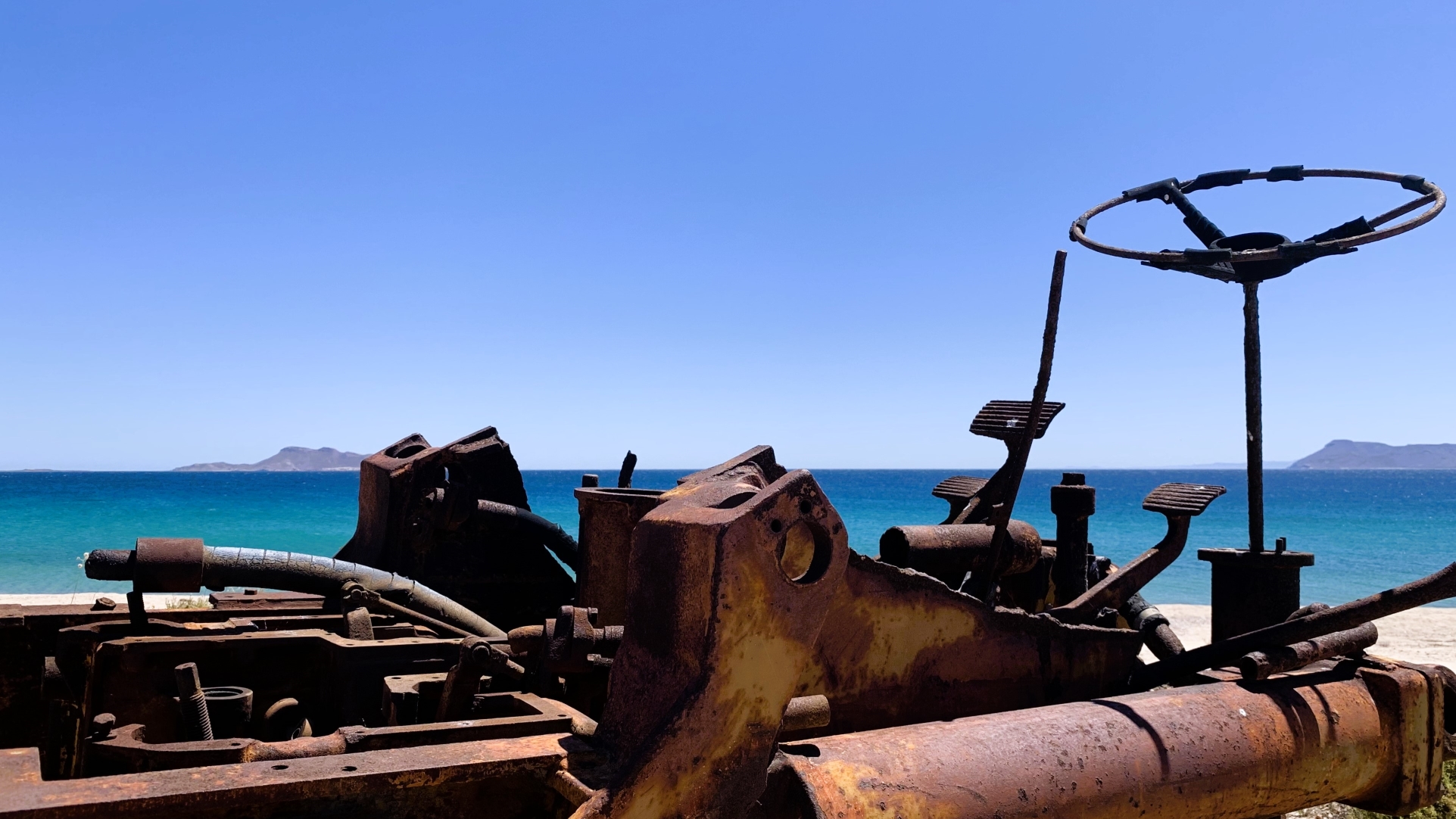

Back to the boat we completed the route to San Evaristo under pretty strong waves coming from the North, making the passage a little rough. We arrived in the bay at the end of the afternoon and anchored in the North part of the bay. San Evaristo is a little fisherman village with their own fresh water production plant and solar electricity. The village has a small grocery store but most importantly they have an excellent restaurant Lupe Sierra’s & Maggi Mae, facing the beach, with an incredibly authentic decoration. There I had the best camarones a la diabla (shrimps in hot tomato sauce) ever. It is at the terrasse of the restaurant we met a very kind family with two daughters almost the age of Victor and Paul with whom they fraternized. All together we celebrated Paul’s 9th birthday on March 31st, the day before we left for Bahia El Gato.
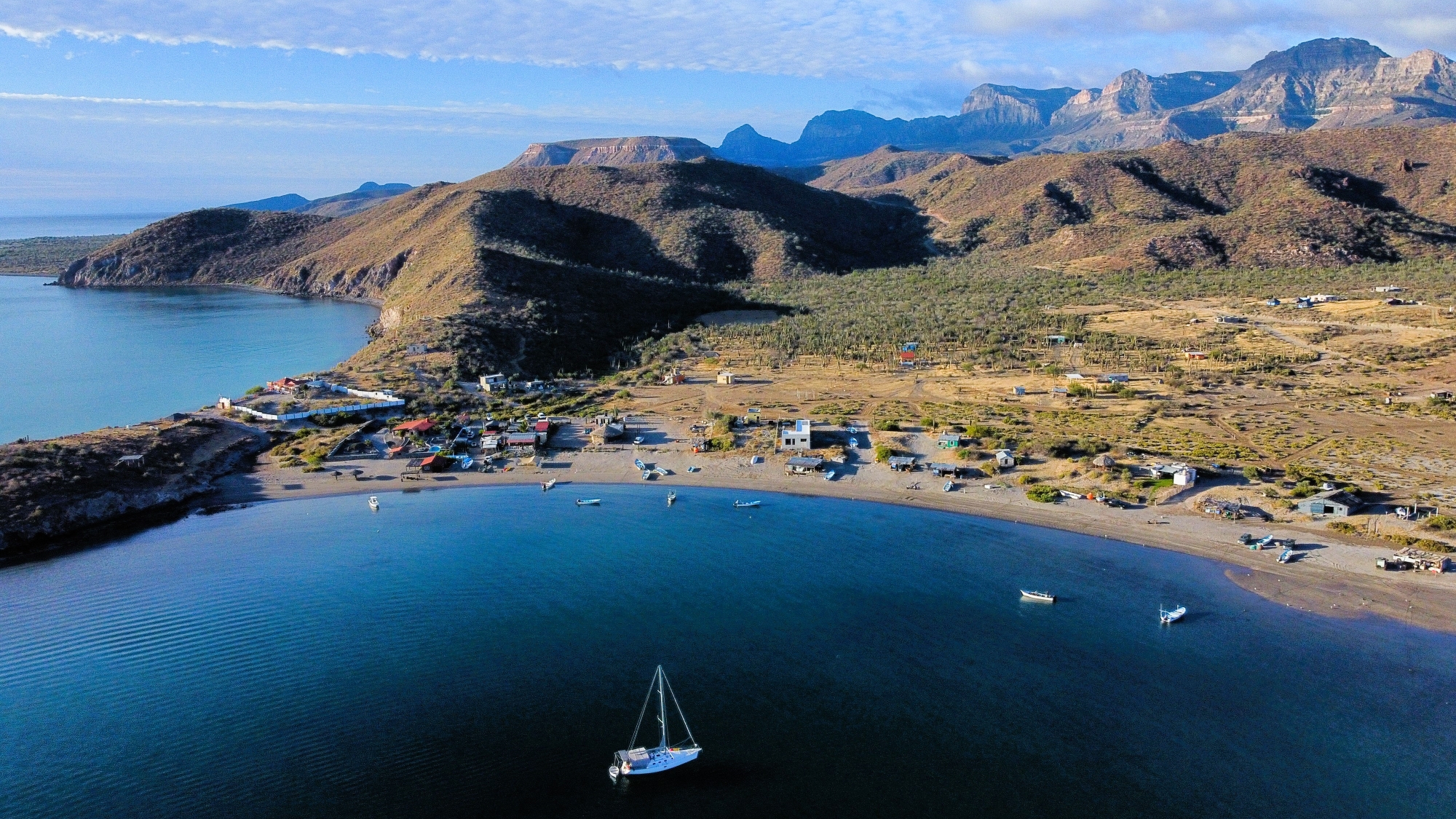

Sailing to Bahia El Gato was a bit less than 30 NM. We anchored mid afternoon in this wonderful bay. The colors and the shapes of the rocks surrounding the bay were worthy of the planet Mars. On the first day we went to the beach and climbed these amazing rock structures overlooking the bay. The second night we opted for a bonfire on the beach with our friends Rob and Rachel, under an astounding sky full of stars. The kids brought their tent and spent the night ashore in a stunning environment. Bahia El Gato is definitely in my top anchorages in the Sea of Cortez.

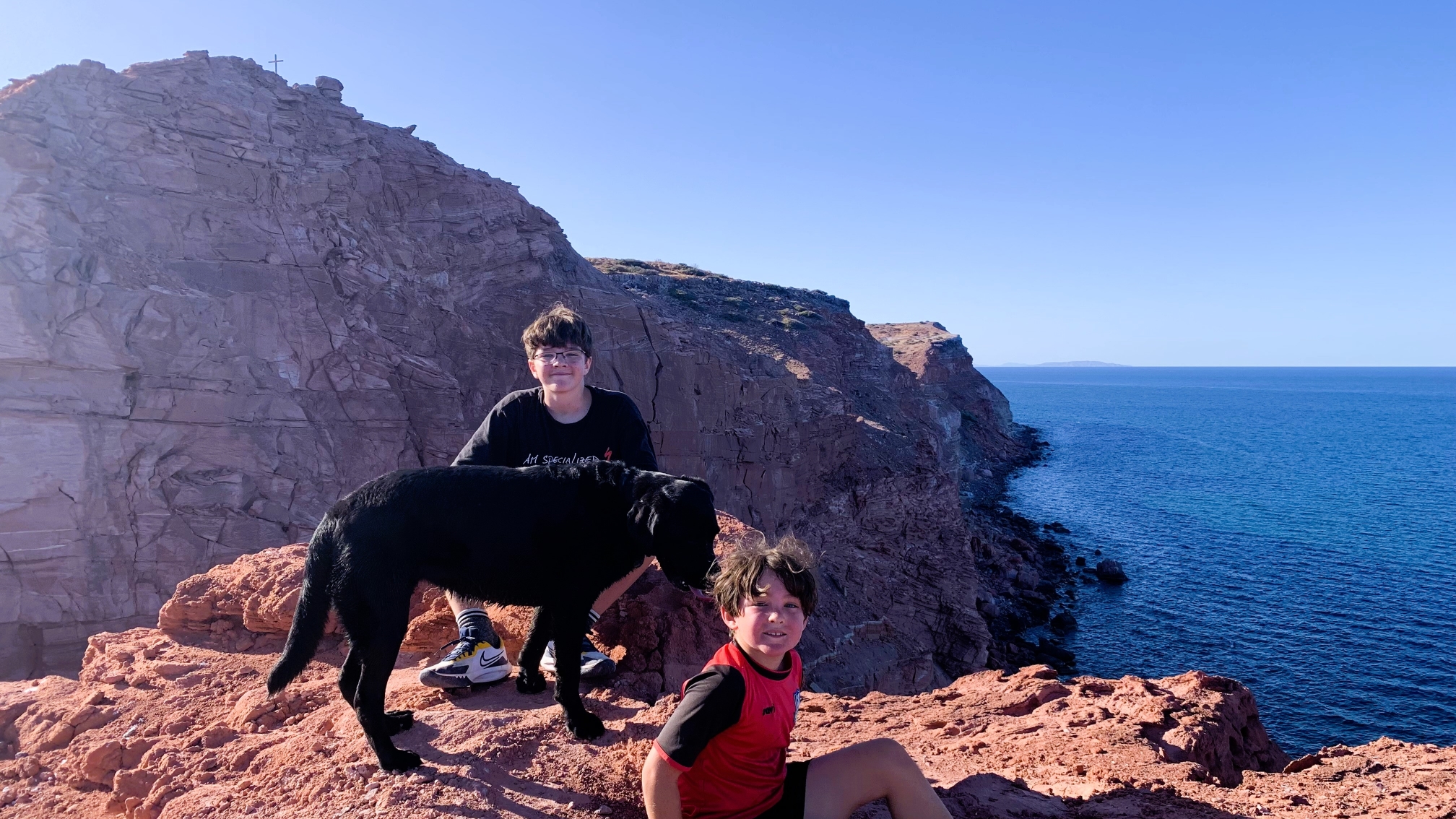
On April 4th we left this wonderful bay in the direction of Agua Verde, about 20 NM North. The name of the bay could not be more accurate, when you drop the anchor you realize how clear the water is and once you take some altitude with the drone, the sailboat seems to float among green clouds with its shade perfectly defined on the white sand bottom. Bahia Agua Verde is a pretty large bay with a few fisherman’s cabins and a little church. The restaurant on the beach is very inexpensive and provides very good tacos, quesadillas and shrimps. The bay was pretty popular as there were around 10 boats anchored around us. At some point we even had to move to keep a safe distance between us. We spent 3 days in the bay then left on April 7th to reach Bahia Candeleros, 15 NM North of Agua Verde.


Bahia Candeleros is mostly a resort area with hotels on the beachfront, so it was not a must see per say, but we wanted to stop there for one night before we reached the Marina Puerto Escondido. The other reason to stop there was the solar eclipse that occurred on April 8th. From there it was almost full but not as full as in Mazatlán, still it was a very unique experience to enjoy in the middle of the bay. After the eclipse, in the afternoon, we departed to the marina located 7 NM North.


The Marina Puerto Escondido offers very nice installations with high quality docks, an excellent restaurant, swimming pool (unfortunately closed when we were there), a pickleboard court and more… The marina is located about 20 km from Loreto, to get there, the marina offers a paid shuttle service, we did not use it so we do not have details, however, the marina also offers a car rental service with Alamo, the procedures are are done on site and the vehicle is delivered to you directly in the marina parking lot. We rented a 7-passenger minivan for 4 days with our friends, which was very practical for making a few return trips to Loreto. We went for a hike in a canon located a few km away from the marina. The scenery was stunning, with huge rock boulders along the way. We could not make it all the way since some of the passages would require rope climbing which was not an option with Chihiro…


On April 15th, we left the marina in the direction of Bahia Salinas on Isla Carmen. You can read the complete blog here. We really enjoyed this bay and the bathing salt marsh was quite an experience! There we stayed 3 days before we moved to Bahia Balandra, on the North-West side of Isla Carmen. We only stayed there one night, but the landscape and the color of the water were so amazing we could have spent more time.


Our next destination was Isla Coronados, less than 10 NM North-West of Isla Carmen. You can read our blog here for this island. As far as colors, I think this is one of the most gorgeous places we have seen in the Sea of Cortez, the shots we took with the drone are just amazing. After two days in paradise, we left for Bahia San Juanico.


Bahia San Juanico is an absolute must see in the Sea of Cortez. The bay is pretty large with some rock formations in the middle, making it unique. A few beaches with white sand are easily accessible with the dinghy. There we made a bonfire with a few sailors that were also anchored in the bay. The sunset that night was just amazing… We spent 5 days in the beautiful bay then left in the morning of April 26th to reach Bahia Pulpito less than 10 NM North.


This bay was a must-see for Victor and Paul as they knew Bahia Pulpito was renowned for its vein of obsidian. We anchored in the bay despite the very strong waves coming from the South-East and went ashore with the dinghy across these waves. The bay offers no sand beach to land so we opted for a small creek in hope to find sand. Unfortunately it was only rocks and the landing was particularly difficult given the size of the waves. We left the dinghy there and went for a long hike on the cliff all around the bay to reach the obsidian deposits. Our way back to the boat was even more perilous, with the waves filling in the dinghy very rapidly. We decided to leave the bay the same day, not taking any chances to spend the night at the anchor with waves pushing us against the coast. We reached the San Sebastian Cove at the end of the afternoon to spend the night. This is a very small bay where only one or two boats can anchor at the same time, we were lucky to be the only ones.


In the morning of April 27th, we resumed our trip North and reached Bahia Concepcion in the afternoon. You can read the blog for this portion of our voyage here. We only spent five days in Bahia Concepcion, but it is so big and has so much to offer that we could have spent two weeks there. We anchored in the following bays during our stay : Playa Santispac, Isla Requeson, Playa Santa Barbara, Playa Coyote and Playa Burro. We went twice to Mulege, a town located at the entrance of the bay, to get supplies but also to visit the museum and the Old Mission.
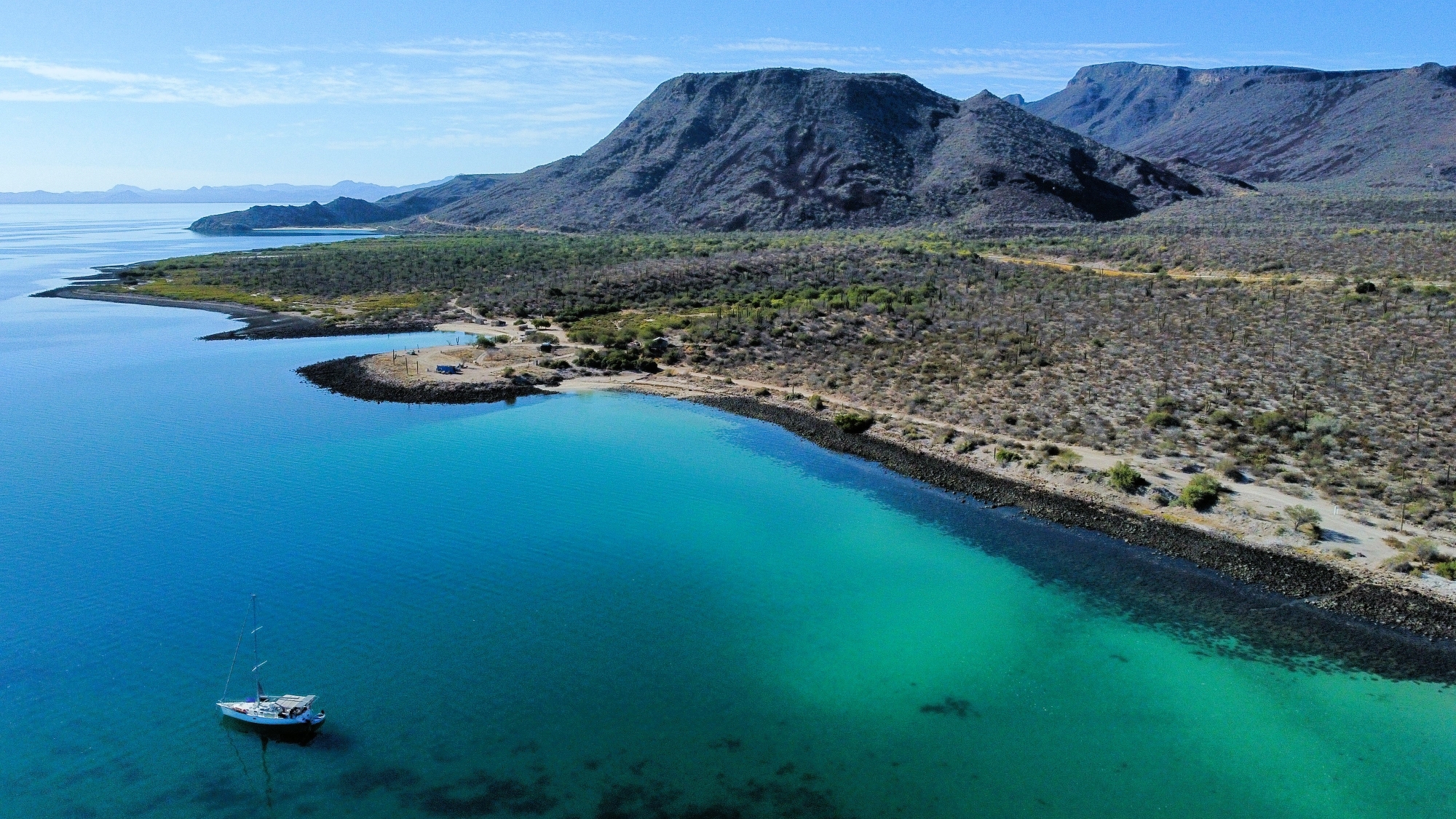

We left Bahia Concepcion on May 2nd and reached Punta Chivato in the afternoon. Just before we arrived, we were escorted by hundreds of dolphins swimming around our boat. The next morning, we took a long walk along the beach and found a little restaurant called Doña Julia. In fact we literally had our breakfast in her dining room among local workers. This was the highlight of our stay in Punta Chivato, which is otherwise ordinary.
On May 3rd, we arrived at the Marina Santa Rosalia in the afternoon. There we met for the first time Steve on SV Southern Cross, he would join Westin Wray and us to complete the trip until Puerto Peñasco. The marina is very small with only a few slips but at a walking distance from the town and all the services. Almost everyday we walked downtown to discover new restaurants, among them Tonka’s grill and its delicious BBQ. We visited the old mine’s museum as well as a church whose structure was designed by Gustave Eiffel. We left the marina around 17:00 in the afternoon of May 7th for a night of navigation to reach Punta San Francisquito, located 75 NM North of Santa Rosalia.


We spent a night in the bay and resumed our trip the next morning in the direction of Isla Partida. Due to the strong northerly winds, we opted to anchor in the southern bay of the island, which is not the most beautiful part. The anchoring conditions were not optimal, with a depth of 40 feet. The next morning we went around the island to the East side. The landscape was indeed more beautiful and probably easier to anchor. We did not stop and continued our trip to Bahia El Pescador.
You can read the complete blog for Bahia El Pescador here. This bay is my favorite place in all the Sea of Cortez, a pure paradise. We stayed 6 days at the anchor in the bay, with many friends also traveling to Puerto Peñasco. We had memorable moments on the beach.


On May 16th, the forecast of 30+ KN of winds forced us to leave and seek shelter in Bahia Don Juan, a couple of NM away from El Pescador. Bahia Don Juan is a very well protected bay that can be accessed by a narrow channel, making it the perfect spot against the waves and strong winds. We spent the night there and reached Bahia de Los Angeles the next morning.
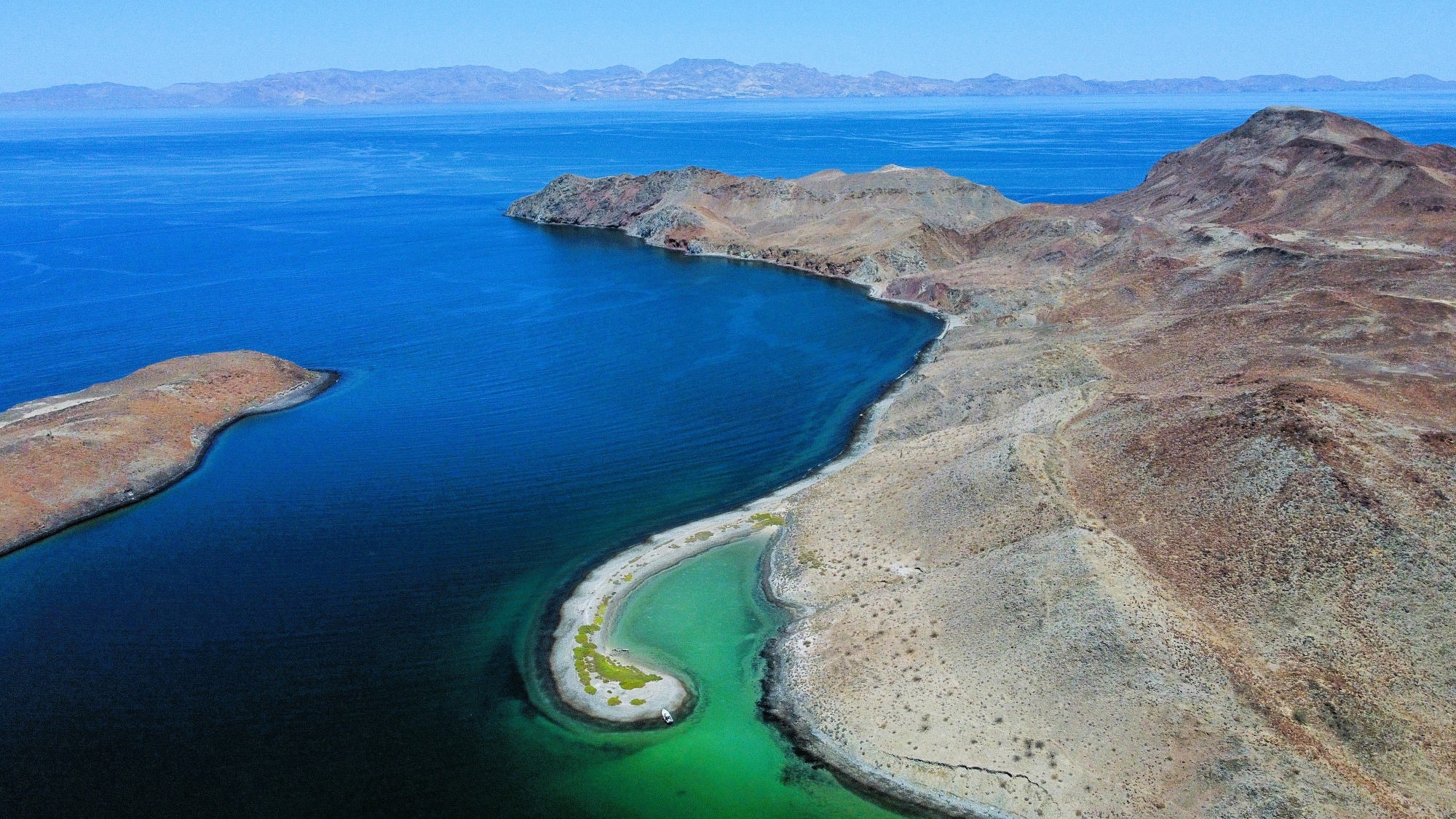

Bahia de Los Angeles is a large open bay with an important fishing activity. The town has many good restaurants and groceries as well as a gas station. You can land easily on the beach in front of the restaurant Guillermo’s and have a drink then walk to the grocery from there. The only drawback of the bay is its exposure to the winds and waves. For this reason we had to go back to Bahia Don Juan on May 19th to get protected.


On May 20th, we resumed our trip in the direction of Alcatraz Cove, the last stop on the Baja side before we reached Puerto Refugio on the North end of Isla Ángel de la Guarda. Puerto Refugio was an amazing bay, extremely well protected. The pallet of colors was incredible, but even more spectacular was the constant change of landscape due to the 10ft tides covering and discovering all the rock formations. There we met some friends that were also heading to Puerto Peñasco and had very pleasant gatherings. Our Haul Out date was scheduled on June 3rd so we decided to leave Puerto Refugio on May 27th to get enough time to unload the boat.


The distance between Puerto Refugio and Puerto Peñasco is around 105 NM so we left mid day and reached our destination around noon the next day after a night of navigation. Puerto Peñasco is above all a shrimp fishing port. You can enter the port following a narrow channel. There we reserved a slip at the Marina Fonatur until the Haul Out date, giving us enough time to unload the boat.
On June 3rd, the Haul Out at Cabrales Boatyard went perfectly well and the boat was stored on the hard. We spent 10 days in Peñasco to work on the boat before our friend Rob went back from Arizona to pick us up and give us a lift to Phoenix.
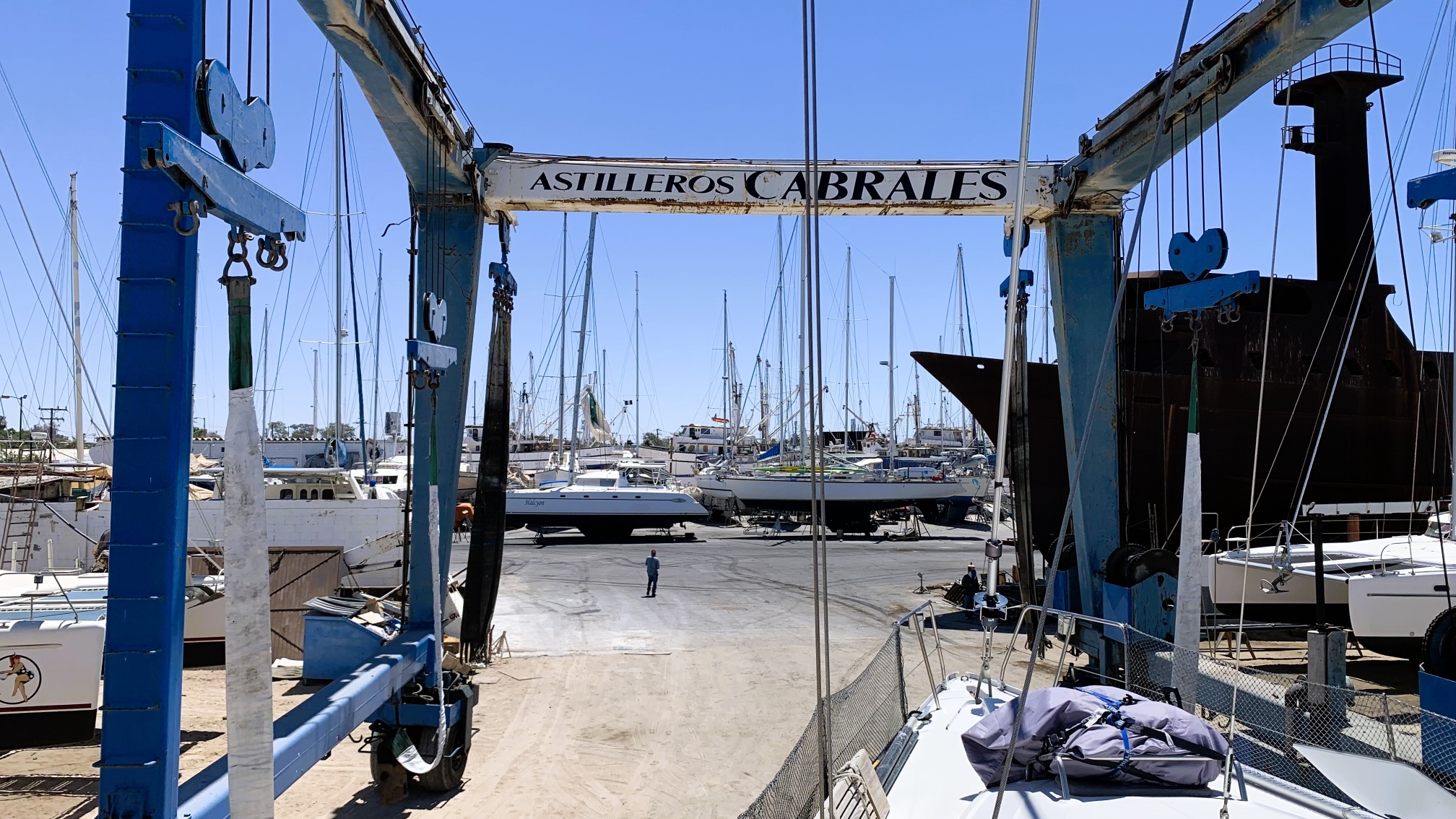

This is the end of a wonderful trip in the Sea of Cortez. We’ve seen so many incredible places, worthy of the pictures you can see in the magazines, met so many nice people and anchored in the most remote bays you could imagine. Our trip will resume in October, after the hurricane season is over, and head South to Costa Rica, this time, hopefully with tailwinds!








